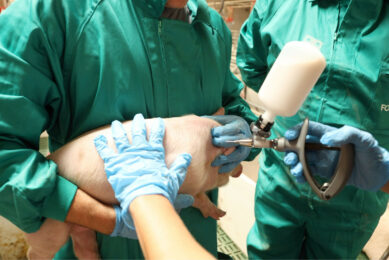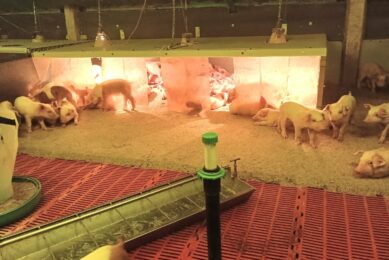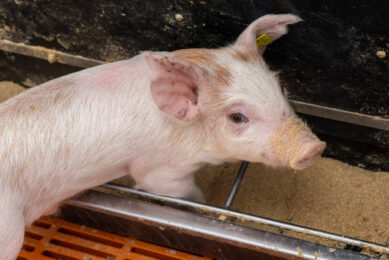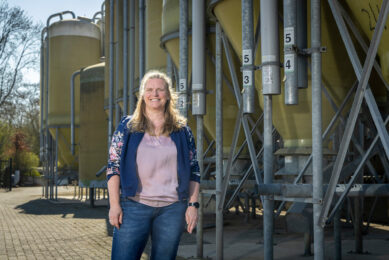Weighing up the effect of parity and prolificacy
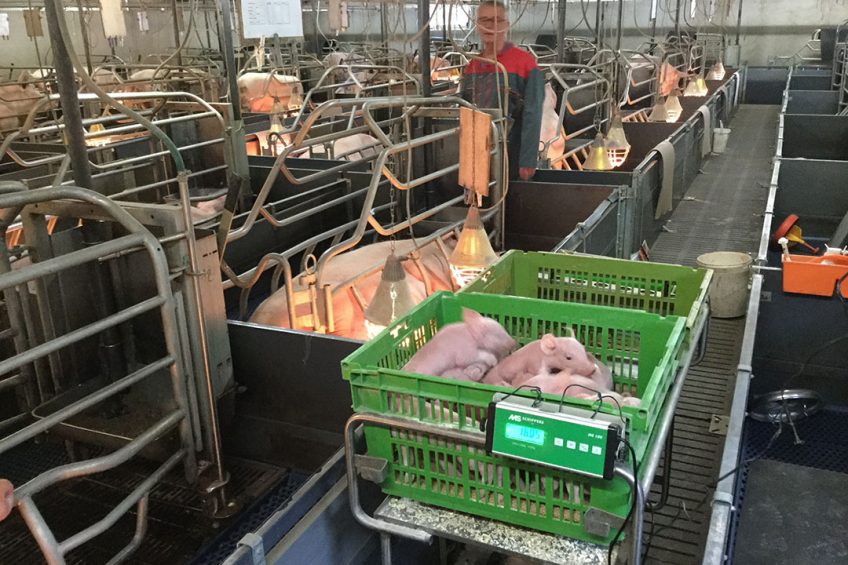
Aimed at sharing best practices and innovations in swine production, the EU PiG Innovation Group presents ambassadors whose innovations stand out. In this episode: the Kalinat index, an online tool to assess litter quality.
The ambassador
Together with his father and brother, Corentin Nevannen is the ambassador of the Kalinat approach and farms 350 sows in south Brittany, France.
The collaboration
Kalinat, a creative combination of the words ‘quality’ and ‘natality’, was created by Alban Berthelot, a member of the pig nutrition team at the Eureden cooperative in France. The Kalinat approach was developed together with about 30 pig farms in Brittany and Corentin is one of the most involved pig farmers.
The innovation
For both sow prolificacy and parity, an average piglet weight to target is calculated to ensure the maximum survival of the piglets. This target average weight comes from a vast database of breeders in the Eureden cooperative who have weighed thousands of litters of piglets at birth. An online tool – the Kalinat index – was developed over a period of 2 years for breeders to assess the quality of a litter of piglets at birth, which has made it possible to finely determine the effect of parity and sow prolificacy on the mean birth weight. Kalinat automatically calculates the average weight of piglets at farrowing for different groups of sows as well as the Kalinat index specific to each sow. The dynamic analysis makes it possible to assess and, if necessary, change the feeding behaviour and breeding practices of the sow(s). Taking into account the Kalinat index of sows in feeding, allotment and culling strategies improves the quality of piglets and enhances the hyperprolificacy of sows. The farmer is also able to identify the smallest piglets to reinforce their monitoring during the lactation period.
Advantages
- A 180g increase in the average birth weight of piglets from sows with a low Kalinat index;
- An increase in the survival rate of newborn piglets;
- A 2.6% reduction of losses on liveborn piglets;
- Proportion of sows with a low Kalinat index decreased from 24% to 19%;
- Easy to implement and measure;
- The index allows breeders to follow the evolution of the quality of litters and identify sows unable to produce good litters.
Based on these assumptions, variable production costs after implementation of best-practice decreased by 2.3% per piglet, mainly due to the higher piglet production per sow per year. A decrease was also observed in the case of fixed costs by 2.8% per piglet. As a result, the total costs were lower by 2.4%.
The costs
The Kalinat tool is free for pig farmers of the Eureden cooperative. Only a weighing machine (approximately € 400) is required, and slightly more time to record the weights of piglets on the online Kalinat tool.
The results
Kalinat has allowed the ambassador, Corentin, to increase production by one pig per sow per year, translating into a positive change in the gross margin of € 24,000 at farm level (360 sows present).
The future?
The team aims to further develop the Kalinat index with as many of the cooperative’s breeders as possible to continually improve their understanding of the factors of variation of the Kalinat index such as the feeding of the sow, the genetic effect, the effect of the housing, and the behaviour of breeding.

EU PiG Innovation Group
The EU PiG Innovation Group (EU PiG) aims to help pig producers find tried-and-tested best practice from fellow producers across Europe. Through an annual EU-wide contest, called the EU PiG Grand Prix, more than 300 producers share their innovative ideas and best practices, which are developed in response to industry-wide challenges, to compete to become one of eight EU PiG ambassadors. Each year, two topics are chosen for each of the project’s four key themes, namely health management, meat quality, animal welfare and precision production. In various editions of Pig Progress, a best practice will be discussed.



